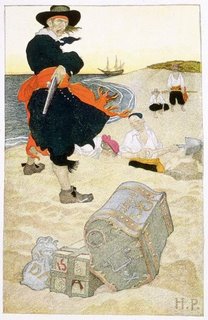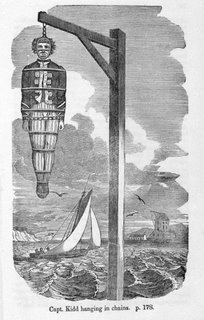Yo Ho Ho & A Bottle Of Rum

If I ever grow up I’m going to be a pirate.
You guessed it. I’ve been reading again.
Thursday I read a reprint of an 1836 edition of The HISTORY OF THE LIVES & BLOODY EXPLOITS of the MOST NOTED PIRATES.
It’s a collection of case histories of individual pirates.
The title page contains no information on the author, but he compiled these accounts from contemporary magazine and newspaper accounts, letters written by prisoners who escaped from pirates, journals, and trial transcripts.
The book portrays pirates in a different light from my previous mental image.
For one thing, contrary to Hollywood razzle-dazzle real life pirates of the late 1700s and early 1800s seldom attacked other ships by a blazing, cannon-thundering frontal assault on the high seas. Yes such attacks sometimes happened but most often Pirates stole by stealth, deceit, subterfuge and treachery. Most often they appear to have taken their prey in ports while the victim was at anchor.
At sea the pirate ship often posed as a vessel in distress (as though they were out of drinking water, etc.) to lure the victim close enough for boarding.
Sometimes in port the pirates would pose as merchants come aboard to buy legitimate cargo. Once they were ensconced aboard, they’d attack and sail the ship away to another port and sell the cargo themselves.
Sneaky.
But the pirates among themselves adhered to a twisted code of honor.
For instance one pirate crew bought goods from a Dutch merchant ship. They stole the whole ship and looted all the money on board — except for the money they had paid for the goods they bought. They felt that taking that money back would be dishonest!
One pirate explained that the purpose of a voyage was to “honestly and quietly rob what Mores that fell in their way, and return home with clean consciences, and clean, but full, hands”.
Many pirate crews did not see themselves as bad guys, but as independent nations afloat, at war with all other nations on earth.
They stood among the world’s first true democracies in that captains, officers and various lower posts were chosen by vote. All in a crew stood equal regardless of race, religion or national origin. And stolen loot was divided by strict contract ratified by all aboard.
When one man was killed in action, the others made sure his portion of the loot went to his widow and children.
Yes, they acted fair and square among themselves (allowing for treachery, lying, cheating, double-dealing and human nature, of course).
Outsiders did not fair as well in the pirates’ hands.
While some were noted for gentlemanly conduct, especially for prisoners of their own nationality, most believed that dead men tell no tales and slaughtered all prisoners taken so that no witness could ever testify against them should they come to trial.
This could get rough.
Pirates played for keeps.
When one captured captain refused to tell where he hid his money, the pirates cut off both his arms at the elbows. This motivated him to tell the cash was sealed between ship ribs. But, because he’d been slow to answer, the pirates coated his bloody stumps with turpentine and set it afire to see him dance.
They laughed at his amusing antics.
Pirates didn’t have cable tv.
Other captives they stripped naked and set on barren sandbars to sunburn to death.
When they felt one captured pilot may have tried to run their ship aground, they nailed both his feet to the deck and left him there for the seas to wash over.
A 17-year-old female captive was passed around among the crew till they approached a port where they feared she might be noticed. They felt that because she had been of such good service, they’d show her mercy by poisoning her instead of giving her a more unpleasant death.
As the pirates considered their nation at war with all other nations, so all other nations hunted down pirates for execution.
On Friday, February 7, 1823, in Kingston, Jamaica, ten pirates were hung.
The judge at a pirate trial used the legal formula “Be carried to the prison from whence you came and from thence to the place of execution, where you are to be hanged by the neck till you are dead, dead, dead”.
Yes, he’d say it three times.
The account goes on to say, “The gallows was of considerable length, and contrived with a drop so as to prevent the unpleasant circumstances which frequently occur”.
I have no idea what that means.
But it doesn’t sound nice.
One chicken-hearted pirate fainted when he saw the gallows. They sat him in a chair and tied him upright. Then they hung him and his chair.
After a hanging, the dead pirate’s body was chained up to rot on display as a warning to other men about the fate of pirates. That’s what happened to Captain Kidd:

Nevertheless, even though some pirates died on a rope, others returned to their homelands with fortunes, set themselves up as gentleman merchants, married into titled families, lived in mansions, became government leaders, and died in old age respected by all as successful men.
That’s the kind of pirate I want to be…
Only one problem…
I get seasick.
Please, visit my website for more www.cowart.info and feel free to look over and buy one of my books www.bluefishbooks.info
posted by John Cowart @ 5:18 AM


1 Comments:
Hi Jaws,
If you include this joke in your daughter's paper, the teacher is sure to give her an A+
Post a Comment
<< Home